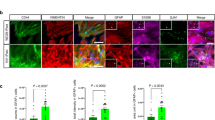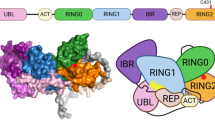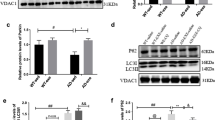Abstract
Autosomal-recessive spastic ataxia of Charlevoix-Saguenay (ARSACS) is caused by loss-of-function mutation in the SACS gene, which encodes sacsin, a putative HSP70-HSP90 co-chaperone. Previous studies with Sacs knock-out (KO) mice and patient-derived fibroblasts suggested that SACSIN mutations inhibit the function of the mitochondrial fission enzyme dynamin-related protein 1 (Drp1). This in turn resulted in mitochondrial hyperfusion and dysfunction. We experimentally tested this hypothesis by genetically manipulating the mitochondrial fission/fusion equilibrium, creating double KO (DKO) mice that also lack positive (PP2A/Bβ2) and negative (PKA/AKAP1) regulators of Drp1. Neither promoting mitochondrial fusion (Bβ2 KO) nor fission (Akap1 KO) influenced progression of motor symptoms in Sacs KO mice. However, our studies identified profound learning and memory deficits in aged Sacs KO mice. Moreover, this cognitive impairment was rescued in a gene dose-dependent manner by deletion of the Drp1 inhibitor PKA/Akap1. Our results are inconsistent with mitochondrial dysfunction as a primary pathogenic mechanism in ARSACS. Instead, they imply that promoting mitochondrial fission may be beneficial at later stages of the disease when pathology extends to brain regions subserving learning and memory.




Similar content being viewed by others
Data Availability
No datasets were generated or analysed during the current study.
References
Aly KA, Moutaoufik MT, Zilocchi M, Phanse S, Babu M. Insights into SACS pathological attributes in autosomal recessive spastic ataxia of Charlevoix-Saguenay (ARSACS)☆. Curr Opin Chem Biol. 2022;71:102211.
Bagaria J, Bagyinszky E, An SSA. Genetics of autosomal recessive spastic Ataxia of Charlevoix-Saguenay (ARSACS) and role of Sacsin in Neurodegeneration. Int J Mol Sci. 2022;23(1).
Lariviere R, Gaudet R, Gentil BJ, Girard M, Conte TC, Minotti S, et al. Sacs knockout mice present pathophysiological defects underlying autosomal recessive spastic ataxia of Charlevoix-Saguenay. Hum Mol Genet. 2015;24(3):727–39.
Girard M, Lariviere R, Parfitt DA, Deane EC, Gaudet R, Nossova N, et al. Mitochondrial dysfunction and Purkinje cell loss in autosomal recessive spastic ataxia of Charlevoix-Saguenay (ARSACS). Proc Natl Acad Sci USA. 2012;109(5):1661–6.
Bradshaw TY, Romano LE, Duncan EJ, Nethisinghe S, Abeti R, Michael GJ, et al. A reduction in Drp1 mediated fission compromises mitochondrial health in autosomal recessive spastic ataxia of Charlevoix Saguenay. Human molecular genetics; 2016.
Duncan EJ, Lariviere R, Bradshaw TY, Longo F, Sgarioto N, Hayes MJ, et al. Altered organization of the intermediate filament cytoskeleton and relocalization of proteostasis modulators in cells lacking the ataxia protein sacsin. Hum Mol Genet. 2017;26(16):3130–43.
Flippo KH, Strack S. Mitochondrial dynamics in neuronal injury, development and plasticity. J Cell Sci. 2017;130(4):671–81.
Cribbs JT, Strack S. Reversible phosphorylation of Drp1 by cyclic AMP-dependent protein kinase and calcineurin regulates mitochondrial fission and cell death. EMBO Rep. 2007;8(10):939–44.
Merrill RA, Slupe AM, Strack S. N-terminal phosphorylation of protein phosphatase 2A/Bbeta2 regulates translocation to mitochondria, dynamin-related protein 1 dephosphorylation, and neuronal survival. FEBS J. 2013;280(2):662–73.
Dagda RK, Zaucha JA, Wadzinski BE, Strack S. A developmentally regulated, neuron-specific splice variant of the variable subunit B-beta targets protein phosphatase 2A to mitochondria and modulates apoptosis. J Biol Chem. 2003;278(27):24976–85.
Flippo KH, Lin Z, Dickey AS, Zhou X, Dhanesha NA, Walters GC, et al. Deletion of a neuronal Drp1 activator protects against cerebral ischemia. J Neurosci. 2020;40(15):3119–29.
Holmes SE, O’Hearn E, Cortez-Apreza N, Hwang HS, Ross CA, Strack S, et al. Spinocerebellar ataxia 12 (SCA12). In: Wells R, Ashizawa T, editors. Genetic instabilities and neurologic. Diseases: Academic; 2006. pp. 461–73.
Merrill MA, Slupe AM, Strack S. Spinocerebellar Ataxia type 12 (SCA12): clinical features and pathogenic mechanisms. In: Storey E, editor. Spinocerebellar ataxias: InTech. Rijeka, Croatia); 2011.
Merrill RA, Dagda RK, Dickey AS, Cribbs JT, Green SH, Usachev YM, et al. Mechanism of neuroprotective mitochondrial remodeling by PKA/AKAP1. PLoS Biol. 2011;9(4):e1000612.
Merrill RA, Strack S, Mitochondria. A kinase anchoring protein 1, a signaling platform for mitochondrial form and function. Int J Biochem Cell Biol. 2014;48:92–6.
Flippo KH, Gnanasekaran A, Perkins GA, Ajmal A, Merrill RA, Dickey AS, et al. AKAP1 protects from cerebral ischemic stroke by inhibiting Drp1-Dependent mitochondrial fission. J Neurosci. 2018;38(38):8233–42.
Guo DF, Merrill RA, Qian L, Hsu Y, Zhang Q, Lin Z, et al. The BBSome regulates mitochondria dynamics and function. Mol Metab. 2023;67:101654.
Battaglini M, Carmignani A, Martinelli C, Colica J, Marino A, Doccini S, et al. In vitro study of polydopamine nanoparticles as protective antioxidant agents in fibroblasts derived from ARSACS patients. Biomater Sci. 2022;10(14):3770–92.
Martinelli C, Battaglini M, Pucci C, Gioi S, Caracci C, Macaluso G, et al. Development of nanostructured lipid carriers for the delivery of idebenone in autosomal recessive spastic Ataxia of Charlevoix-Saguenay. ACS Omega. 2020;5(21):12451–66.
Criscuolo C, Procaccini C, Meschini MC, Cianflone A, Carbone R, Doccini S, et al. Powerhouse failure and oxidative damage in autosomal recessive spastic ataxia of Charlevoix-Saguenay. J Neurol. 2015;262(12):2755–63.
Marquez BT, Leung TCS, Hui J, Charron F, McKinney RA, Watt AJ. A mitochondrial-targeted antioxidant (MitoQ) improves motor coordination and reduces Purkinje cell death in a mouse model of ARSACS. Neurobiol Dis. 2023;183:106157.
Nopoulos PC, Ceilley JW, Gailis EA, Andreasen NC. An MRI study of cerebellar vermis morphology in patients with schizophrenia: evidence in support of the cognitive dysmetria concept. Biol Psychiatry. 1999;46(5):703–11.
Kim JJ, Andreasen NC, O’Leary DS, Wiser AK, Ponto LL, Watkins GL, et al. Direct comparison of the neural substrates of recognition memory for words and faces. Brain. 1999;122(Pt 6):1069–83.
Andreasen NC, O’Leary DS, Paradiso S, Cizadlo T, Arndt S, Watkins GL, et al. The cerebellum plays a role in conscious episodic memory retrieval. Hum Brain Mapp. 1999;8(4):226–34.
Schmahmann JD, Sherman JC. Cerebellar cognitive affective syndrome. Int Rev Neurobiol. 1997;41:433–40.
Tavano A, Grasso R, Gagliardi C, Triulzi F, Bresolin N, Fabbro F, et al. Disorders of cognitive and affective development in cerebellar malformations. Brain. 2007;130(Pt 10):2646–60.
Verhoeven WM, Egger JI, Ahmed AI, Kremer BP, Vermeer S, van de Warrenburg BP. Cerebellar cognitive affective syndrome and autosomal recessive spastic ataxia of charlevoix-saguenay: a report of two male sibs. Psychopathology. 2012;45(3):193–9.
Tremblay M, Girard-Cote L, Brais B, Gagnon C. Documenting manifestations and impacts of autosomal recessive spastic ataxia of Charlevoix-Saguenay to develop patient-reported outcome. Orphanet J Rare Dis. 2022;17(1):369.
Newhall KJ, Criniti AR, Cheah CS, Smith KC, Kafer KE, Burkart AD, et al. Dynamic anchoring of PKA is essential during oocyte maturation. Curr Biol. 2006;16(3):321–7.
Luong TN, Carlisle HJ, Southwell A, Patterson PH. Assessment of motor balance and coordination in mice using the balance beam. J Vis Exp. 2011(49).
Acknowledgements
We acknowledge technical assistance by Yufang Kong, Kathleen Kelley, Gail Healy, and Marisol Lauffer. Many of the experiments were conducted at the Neural Circuits and Behavior Core of the Iowa Neuroscience Institute. Sacs KO mice were a kind gift of Bernard Brais, McGill (3), Akap1 KO mice were donated by G. Stanley McKnight, U. Washington (29), and Bβ2 KO mice were generated at the U. Iowa Mouse KO Core Facility. The data used for Fig. 1 in this manuscript were obtained from the Genotype-Tissue Expression (GTEx) Portal on 3/8/24. The GTEx Project was supported by the Common Fund of the Office of the Director of the National Institutes of Health, and by NCI, NHGRI, NHLBI, NIDA, NIMH, and NINDS.
Funding
This work was supported by the Ataxia of Charlevoix-Saguenay Foundation. Additional support was provided by R21 AG080472-01 and the Simons Foundation Autism Research Initiative (SFARI).
Author information
Authors and Affiliations
Contributions
RAM and SS conceptualized the study. CC, RAM, and CJJ performed experiments, and CC and SS prepared the figures and wrote the manuscript. All authors read, edited, and approved the final manuscript before submission.
Corresponding author
Ethics declarations
Competing Interests
The authors declare no competing interests.
Additional information
Publisher’s Note
Springer Nature remains neutral with regard to jurisdictional claims in published maps and institutional affiliations.
Rights and permissions
Springer Nature or its licensor (e.g. a society or other partner) holds exclusive rights to this article under a publishing agreement with the author(s) or other rightsholder(s); author self-archiving of the accepted manuscript version of this article is solely governed by the terms of such publishing agreement and applicable law.
About this article
Cite this article
Chen, C., Merrill, R.A., Jong, C.J. et al. Driving Mitochondrial Fission Improves Cognitive, but not Motor Deficits in a Mouse Model of Ataxia of Charlevoix-Saguenay. Cerebellum (2024). https://doi.org/10.1007/s12311-024-01701-1
Accepted:
Published:
DOI: https://doi.org/10.1007/s12311-024-01701-1




